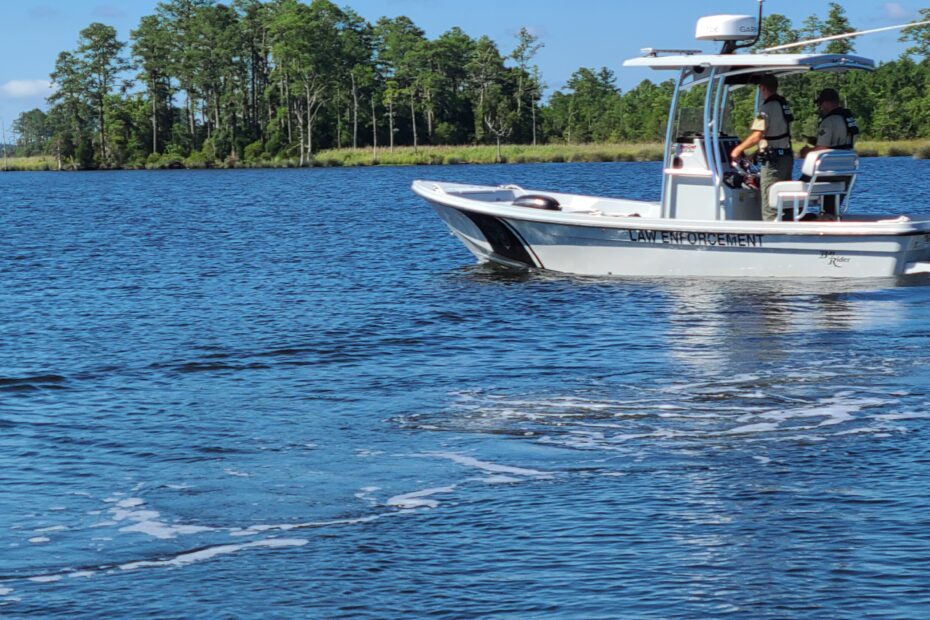Any products linked in the post below are affiliate marketing links. As an Amazon Associate, we may earn a small commission on qualifying products when you make a purchase but there is no additional cost to you.
Anytime law enforcement stops you in an automobile or on the water, it can be stressful! So, keep your stress levels down and make sure you are in compliance with all North Carolina boating regulations. Being in compliance will also keep you from having to pay tickets or fines for violations. Here are some of the common items NC Wildlife may check if they pull up alongside your boat:
- Personal Flotation Devices (PFDs) – All boats must have at least one wearable Type I, II, III, for boats 16 feet or less. A boat longer than 16ft requires a Type IV PFD for each person on board. Type I provides the highest level of buoyancy and is suitable for open ocean or rough water. Type II and Type III are designed for calmer waters, while Type V PFDs are for specific activities like kayaking or windsurfing. PFDs must be in good condition and easily accessible. PFDs need to be properly maintained, inspected regularly for any damage or wear, and replaced when necessary to ensure their effectiveness.
- Fire Extinguishers – Boats with enclosed engine compartments, built-in fuel tanks, or open-flame cooking or heating devices must have at least one USCG-approved fire extinguisher on board. Fire extinguishers are classified by letters and numbers, indicating the type and size of fires they can effectively tackle. In North Carolina, a class B-I fire extinguisher is required. Class B extinguishers are for fires involving flammable liquids such as gasoline, oil, and propane. Regular maintenance and inspection of fire extinguishers are crucial. Ensure the pressure gauge on the extinguisher shows it is charged and ready for use. Check for any signs of damage, corrosion, or leaks. Follow the manufacturer’s instructions and conduct periodic checks to ensure the extinguisher is in proper working order.
- Navigation Lights – Boats operating between sunset and sunrise must have navigation lights that meet USCG regulations. Make sure your navigation lights works before taking to the water. The specific lights required on a boat depend on its size, type, and operating conditions. The primary navigation lights are:
- Red and Green Side Lights: These are located on the bow (front) of the boat. The red light signifies the port side (left), and the green light signifies the starboard side (right) when facing forward.
- White Stern Light: This light is located on the stern (rear) of the boat and helps other boaters see your boat from behind.
- Sound-Producing Devices – Boats must have a whistle or horn that can be heard for at least one-half mile.
- Registration and Validation Stickers – All motorized boats must be registered with the North Carolina Wildlife Resources Commission and display valid registration and validation stickers. NC Wildlife makes it easy to renew your registration online.
- Fishing Licenses – If you plan to fish, you must have a valid North Carolina fishing license. It is helpful to have laminated copies of your licenses and registration easily accessible at all times in your watercraft.
- Boating Safety Certificate – If you were born after January 1, 1988, you must have a boating safety certificate to operate a vessel powered by a motor of 10 horsepower or greater.
These are just some of the items that a game warden may check when inspecting your boat. This list is not comprehensive. It is important to consult the NC Wildlife website, familiarize yourself with all North Carolina boating regulations, and make sure your boat is in compliance before hitting the water.
If you enjoy the content here, share with a friend!
